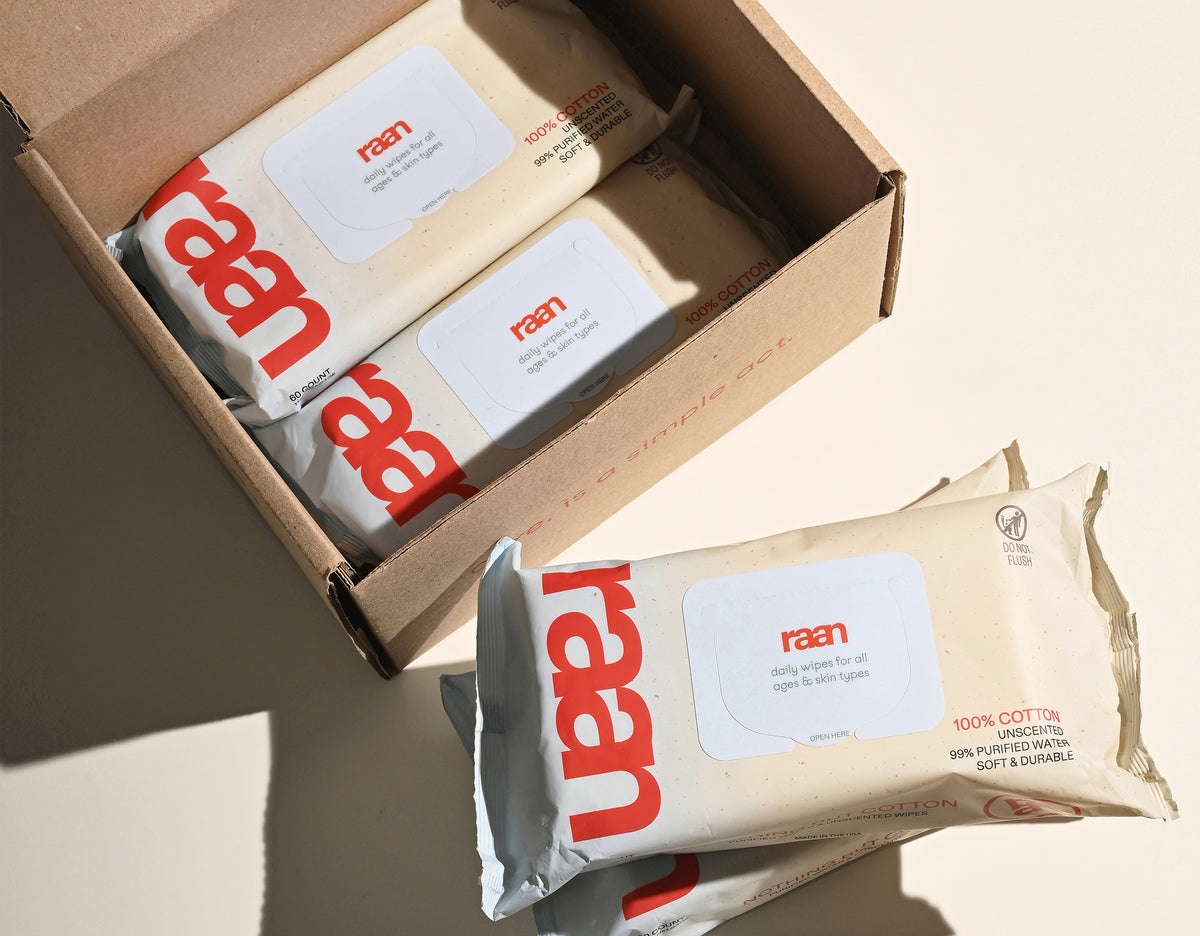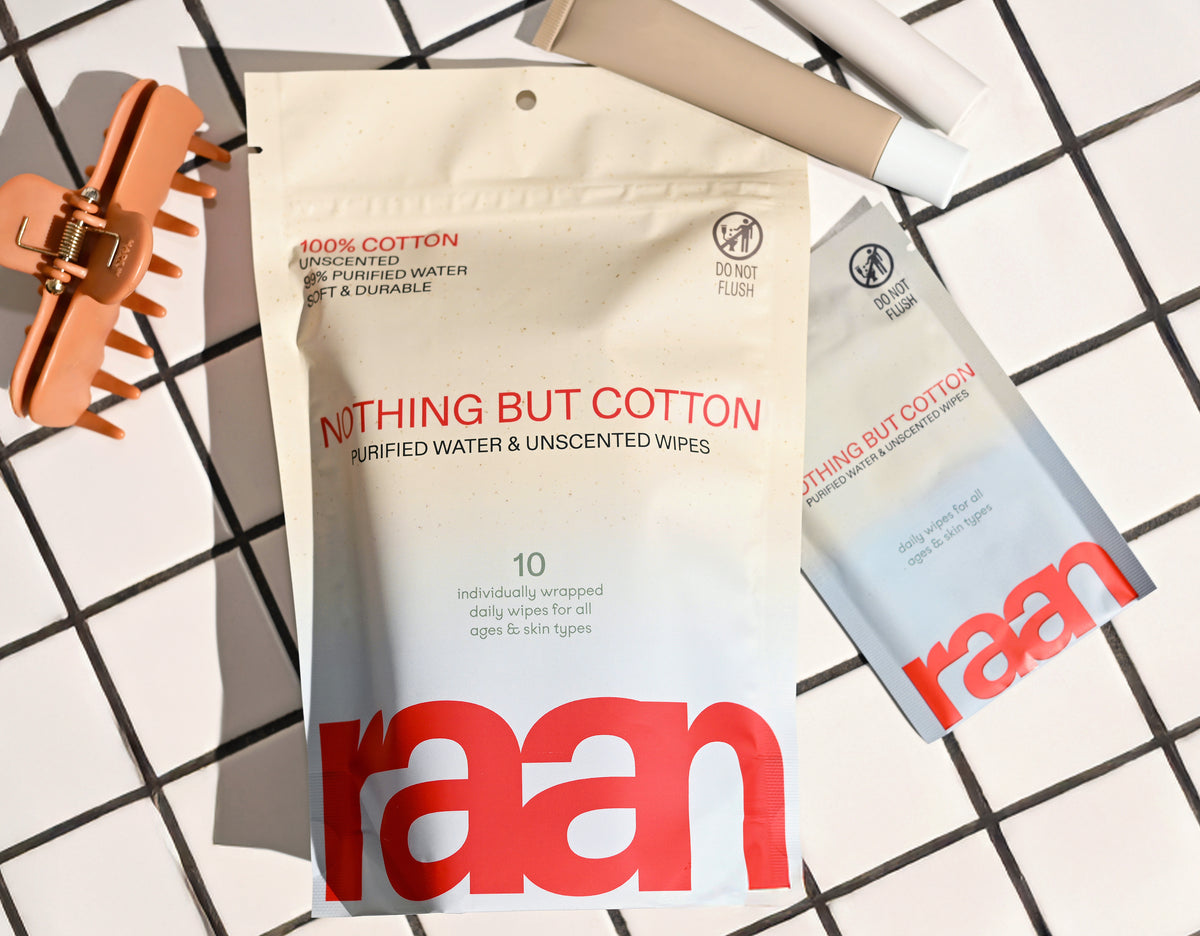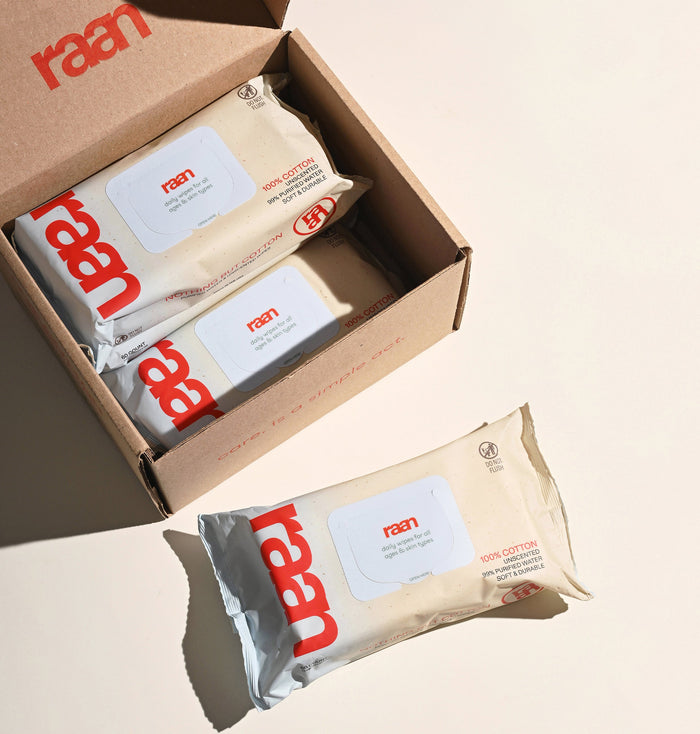Key Takeaways
- EWG baby wipes meet the Environmental Working Group's Verified standards for ingredient safety and transparency.
- These wipes undergo rigorous third-party review to ensure all ingredients have low hazard scores.
- EWG baby wipes avoid synthetic preservatives and plastic fibers commonly found in conventional wipes.
- The Environmental Working Group's Verified standard is considered the gold standard for safe personal care products.
Table of Contents
- What Are EWG Baby Wipes?
- Understanding the EWG Verified Standard: Why It Exists & How It Works
- Ingredients That Make (or Break) an EWG Baby Wipe
- Comparing EWG Baby Wipes: How EWG Verified Outperforms the Rest
- How to Choose the Best EWG Baby Wipes for Your Family
- Eco-Impact: Why Biodegradable and Plastic-Free EWG Wipes Matter
- References, Tools, and Where to Learn More
- Making the Switch: Why EWG Baby Wipes Represent the New Standard
EWG Baby Wipes: The Honest Guide to Safe, Transparent Clean
What Are EWG Baby Wipes?
EWG baby wipes are personal care wipes that meet the Environmental Working Group's Verified standards, the gold standard for ingredient safety and full transparency. Unlike conventional wipes packed with synthetic preservatives and plastic fibers, these products undergo rigorous third-party review to ensure every ingredient earns a low hazard score.
For parents seeking the safest option, the only unbleached, 100% cotton baby wipe for sensitive skin offers unmatched purity and softness, making it ideal for newborns and those with delicate skin.
If you need a convenient, on-the-go solution, consider the unbleached, 100% cotton pocket wipe for sensitive skin, which provides the same EWG-level safety in a portable format.
Understanding the EWG Verified Standard: Why It Exists & How It Works

The Environmental Working Group created EWG Verified to cut through misleading "clean" claims with science-based criteria. Their Skin Deep database assigns hazard scores from 1 (low risk) to 10 (high risk), evaluating ingredients for cancer concerns, allergies, and developmental toxicity.
To earn EWG Verified status, brands must submit complete ingredient lists, manufacturing disclosures, and third-party safety data. The process includes:
- Full ingredient transparency, no "proprietary blends"
- Independent toxicity assessment using peer-reviewed research
- Manufacturing practice verification
- Ongoing monitoring for formula changes
Unlike trendy wellness labels that rely on marketing buzzwords, EWG Verified demands evidence. This rigorous approach explains why Raan's wipes, with just five EWG-verified ingredients, represent a new standard for the entire industry.
Ingredients That Make (or Break) an EWG Baby Wipe
EWG baby wipes typically contain fewer than 10 ingredients, a stark contrast to conventional wipes with 20+ additives. This minimalist approach reduces potential irritants while maintaining effectiveness.
EWG-friendly ingredients you'll find:
- Purified water (99%) - The gentlest base possible
- Organic aloe - Natural skin conditioning without synthetic emollients
- Food-grade preservatives - Safe preservation using sodium benzoate and potassium sorbate
- Ethylhexylglycerin - Plant-derived skin conditioner
- Citric acid - Natural pH balancing
What's deliberately excluded:
- Synthetic fragrances and phthalates
- Plastic fibers (polyester, polypropylene)
- Parabens and phenoxyethanol
- SLS and harsh surfactants
- Bleaching agents and optical brighteners
Research shows that minimalist formulas significantly reduce contact dermatitis risk, particularly important for newborn skin that's 30% thinner than adult skin.
Comparing EWG Baby Wipes: How EWG Verified Outperforms the Rest
EWG baby wipes represent a fundamental shift from conventional options. While drugstore wipes rely on synthetic preservatives and plastic substrates, EWG Verified products prioritize material science and ingredient integrity.
| Feature | EWG Verified | Conventional | "Natural" Labeled |
|---|---|---|---|
| Ingredient Count | 5-8 ingredients | 15-25 ingredients | 10-15 ingredients |
| Material Base | Unbleached cotton | Plastic blend | Varies widely |
| Preservative Type | Food-grade | Synthetic | Mixed |
| Third-Party Review | Yes (EWG) | No | Sometimes |
| Microplastic Free | Yes | No | Not guaranteed |
Real-world scenarios: For diaper rash management, EWG baby wipes' minimal formula reduces further irritation. For sensitive adult skin or post-workout cleansing, the unbleached cotton base provides gentle yet effective cleaning without synthetic residue.
For families who want a versatile solution, the mess-ready pack is designed to handle everything from diaper changes to quick cleanups, all while maintaining EWG-level safety standards.
How to Choose the Best EWG Baby Wipes for Your Family

Selecting the right EWG baby wipes starts with reading ingredient labels strategically. Look for the EWG Verified seal first, this eliminates guesswork about safety scores. Then check for specific material claims: "unbleached, 100% cotton" signals plastic-free construction, while "fragrance-free" confirms no synthetic scents.
Step-by-step selection process:
- Download the EWG Healthy Living app - Scan barcodes instantly for ingredient breakdowns
- Prioritize substrate material - Choose cotton over polyester blends to avoid microplastics
- Count ingredients - Fewer than 10 typically means cleaner formulation
- Patch test new products - Apply to inner wrist, wait 20 minutes, check for redness
Storage Tip
Keep wipes sealed tightly and use within 6 weeks of opening. Natural preservatives work effectively but require proper storage to maintain safety.
Real-world applications: For newborn diapering, prioritize hypoallergenic formulas with organic aloe. For travel or gym use, focus on biodegradable options that won't leave synthetic residue on skin. Post-workout face cleansing works best with pH-balanced wipes containing citric acid for gentle effectiveness.
If you're just starting your journey toward safer personal care, the starter set provides an easy way to try multiple EWG-compliant wipes and find the best fit for your family's needs.
Eco-Impact: Why Biodegradable and Plastic-Free EWG Wipes Matter
Conventional wipes contain up to 80% plastic fibers, taking 100+ years to decompose while releasing microplastics into waterways. EWG baby wipes made from unbleached, 100% cotton biodegrade within 6-8 weeks in commercial composting facilities.
Raan's approach demonstrates industry-leading sustainability: our packaging uses 70% less plastic than standard wipes by eliminating hard plastic lids. The pouch contains 35% post-consumer waste, while outer boxes achieve 100% recyclability. This reduces environmental footprint without compromising product integrity.
Environmental comparison data:
- Plastic-based wipes: 500+ years landfill persistence
- Cotton-based wipes: 6-8 weeks biodegradation
- Packaging waste reduction: 70% less plastic per unit
Consumer action amplifies impact: choose compostable wipes, recycle outer packaging, and store products properly to minimize waste. Research from the Marine Conservation Society shows that switching to plastic-free wipes prevents an average of 2,400 microplastic particles per household annually from entering water systems.
For more on the environmental benefits of compostable wipes, see this in-depth guide on compostable wipes.
References, Tools, and Where to Learn More
Stay informed about EWG baby wipes and ingredient safety through these trusted resources:
- EWG Healthy Living app - Real-time ingredient scanning and safety scores
- EWG Skin Deep database - Comprehensive ingredient hazard assessments
- Raan ingredient transparency page - Complete formulation details and sourcing information
- EWG Verified brand directory - Updated list of certified products across categories
To better understand the science behind EWG verification, read this overview of EWG Verified and how it sets the standard for safe personal care products.
Follow EWG's quarterly ingredient alerts and brand transparency reports to stay current with evolving safety standards. The landscape of clean personal care continues advancing, with new certifications and improved formulations emerging regularly.
Making the Switch: Why EWG Baby Wipes Represent the New Standard
The shift toward EWG baby wipes reflects growing consumer demand for transparency over marketing claims. Unlike conventional wipes hiding ingredient functions behind vague terms, EWG Verified products provide complete formulation disclosure with science-backed safety assessments.
Raan exemplifies this new standard: unbleached, 100% cotton construction eliminates microplastic concerns, while our five EWG-verified ingredients serve specific, necessary functions. No hidden preservatives, no synthetic conditioning agents, no unexplained additives.
The compelling case for switching:
- Immediate benefits: Reduced irritation risk for sensitive skin, elimination of plastic fiber exposure
- Long-term advantages: Supporting transparent manufacturing, reducing environmental microplastic load
- Family-wide utility: Safe for newborns through adults, versatile for face, body, and cleanup tasks
Industry momentum continues building toward cleaner formulations. Major retailers now dedicate shelf space to EWG Verified products, while conventional brands reformulate to meet rising safety expectations. Early adopters benefit from accessing these innovations before they become mainstream necessities.
The choice extends beyond personal care, it's about supporting a market shift toward genuine transparency. Every purchase of EWG baby wipes signals demand for honest ingredient disclosure and science-based safety standards, driving broader industry improvement.
For a deeper dive into the health implications of baby wipe ingredients, review this research from the National Institutes of Health.
To learn more about safe diapering and infant care, visit the CDC's infant care and wipes resource.
Frequently Asked Questions
What criteria must baby wipes meet to earn the Environmental Working Group's Verified standard?
Baby wipes must provide full ingredient transparency, undergo independent toxicity assessments using peer-reviewed research, verify manufacturing practices, and maintain ongoing monitoring for formula changes to earn the EWG Verified standard. This ensures all ingredients have low hazard scores and meet strict safety and transparency requirements.
How do EWG baby wipes differ from conventional wipes in terms of ingredients and safety?
EWG baby wipes avoid synthetic preservatives and plastic fibers commonly found in conventional wipes. They use only ingredients with low hazard scores verified through rigorous third-party review, offering a safer, more transparent alternative that prioritizes skin health and environmental responsibility.
Why is it important that EWG baby wipes are free from synthetic preservatives and plastic fibers?
Synthetic preservatives and plastic fibers can cause irritation and contribute to environmental pollution. EWG baby wipes exclude these to protect sensitive skin and reduce plastic waste, providing a cleaner, gentler, and more sustainable option for everyday care.
What are the benefits of using minimalist ingredient formulas in EWG baby wipes for sensitive or newborn skin?
Minimalist formulas reduce the risk of irritation and allergic reactions by limiting exposure to unnecessary chemicals. For sensitive or newborn skin, this means a gentler, safer wipe that supports natural skin health without compromising on cleanliness or comfort.






